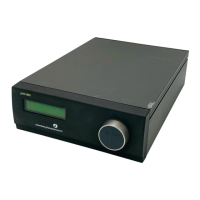
Do you have a question about the Amersham Pharmacia Biotech AKTA design pH/C-900 and is the answer not in the manual?
| Category | Monitor |
|---|---|
| Accuracy (Conductivity) | ±1% of reading |
| Power Supply | 100-240 V AC, 50/60 Hz |
| Weight | 2.5 kg |
| Device Type | pH and Conductivity Monitor |
| pH Range | 0-14 pH |
| Temperature Compensation | Automatic |
| Outputs | Analog (0-1 V), Digital (RS-232) |
| Display | LCD |
Lists the trademarks mentioned in the manual, including ÄKTA and UNICORN.
Provides contact addresses for Amersham Pharmacia Biotech entities worldwide.
Overview of the Monitor pH/C-900, its features, and applications in liquid chromatography.
Details important safety guidelines for using the instrument, including warnings about high voltage.
Instructions for unpacking the instrument and inspecting for any shipping damage.
Guidelines for selecting a suitable location and environment for instrument installation.
Step-by-step guide for connecting the conductivity flow cell to the instrument.
Procedure for installing the optional pH electrode, including handling precautions.
Instructions for connecting electrical signal cables for chart recorders and other outputs.
Guide for establishing a communication link using UniNet cables.
Steps for connecting the instrument to a grounded mains socket.
Final steps to prepare the instrument for operation, including setting cell constants.
Procedure for switching on the instrument and its initial self-test sequence.
Explains how to navigate through menus using the selection dial and OK/ESC buttons.
Provides a summary of the main operating menu options and their functions.
How to view pH and conductivity measurements on the main display.
Procedure for setting the conductivity measurement scale relative to buffers.
Step-by-step guide for calibrating the pH electrode using buffer solutions.
Procedure for calibrating the conductivity measurement using calibration solutions.
How to connect and configure an external chart recorder for pH and conductivity output.
Instructions for proper storage of the pH electrode and instrument shutdown.
Information on how the instrument behaves and restarts after a power interruption.
Recommended intervals and actions for routine maintenance tasks.
Procedure for cleaning both the conductivity and pH flow cells.
Methods for cleaning the pH electrode to improve response and accuracy.
Steps for replacing the pH electrode, referring to installation section.
Detailed cleaning procedure for the conductivity flow cell.
Instructions for replacing the conductivity flow cell.
How to clean the external casing of the instrument.
Information to provide when contacting Amersham Pharmacia Biotech for support.
Troubleshooting common pH measurement issues and suggested corrective actions.
Troubleshooting common conductivity measurement issues and suggested corrective actions.
Explanation of instrument error messages and their corresponding resolutions.
Overview of the Monitor pH/C-900 instrument, its components, and connectivity.
Technical description of the pH electrode, including its construction and reference system.
Technical description of the conductivity cell, including electrodes and temperature sensor.
Details on the Check and Setup menu options for instrument configuration.
Procedure for calibrating the conductivity cell, including preparing calibration solution.
How to set the conductivity cell constant after replacing the flow cell.
Configuration for pH temperature compensation, display, and temperature sensor calibration.
Options for setting temperature display, instrument language, unit number, and display angle.
How to set the alarm/timer function and information on service displays.
A visual representation of the instrument's menu structure.
Performance specifications for pH and conductivity measurements, including range and accuracy.
Technical details for the pH and conductivity flow cells, including materials and dimensions.
Information on the chemical resistance of wetted parts to various solvents and buffers.
General physical characteristics, dimensions, and weight of the instrument.
Information regarding compliance with EMC and Low Voltage Directives.
Catalog of available accessories and replacement parts with code numbers.
A concise guide for users already familiar with the instrument's safety and operation.